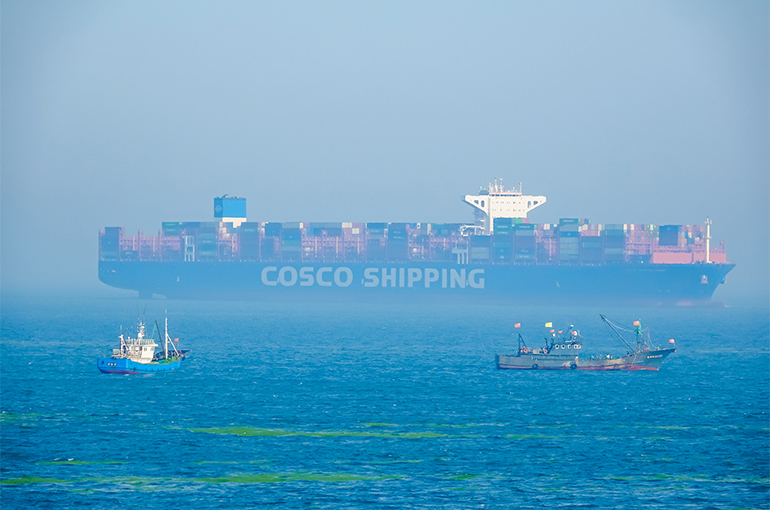 Ongoing Red Sea Crisis Is Likely to Drive Sea Freight Costs Up Further, Expert Says
Ongoing Red Sea Crisis Is Likely to Drive Sea Freight Costs Up Further, Expert Says(Yicai) May 21 -- The continuing unrest in the Red Sea, which has led to many global shipping giants suspending transport through the Suez Canal following a number of attacks on their ships, has resulted a big drop in shipping capacity. As peak retail season approaches in the second half of the year, sea freight costs could keep rising, an expert said.
The third quarter is the busiest season for shipping as retailers prepare for the end-of-year holidays and stock up on inventory, said Luo Jie, a shipping industry insider. Not only is there a shortage in available shipping capacity, but the volume of cargo to be transported is expected to expand.
In the past few weeks, sea freight rates from Asia have surged around 30 percent to USD4,500. It now costs USD4,333 to ship a forty-foot equivalent container to the US west coast from Asia, USD5,495 to the Mediterranean and USD4,603 to northern Europe, according to digital freight platform Freightos.
The price increases ultimately hurt small end customers with little bargaining power, while large importers are less affected, Luo said.
Retail giants such as Amazon and Walmart secured long-term contracts when freight rates were lower, said Peter Sand, chief analyst at shipping platform Xeneta. But as spending power in the US continues to increase, if the capacity shortage persists, these retailers' transportation costs will undoubtedly also rise.
The Red Sea crisis was triggered in November last year when Houthi militants in Yemen opposed the invasion of the Gaza Strip, and started firing missiles at Israeli, US, British and other nations’ ships. Shipping volumes through the Suez Canal plunged 66 percent in early April from a year earlier and, so far, 3,395 vessels have changed their routes, preferring to take a big detour around the Cape of Good Hope.
Many European shipping companies, such as Switzerland’s Mediterranean Shipping Company and Denmark’s Maersk, no longer dare to sail the Red Sea route, which includes the Red Sea, Saudi Arabia and Egypt, as their vessels have been attacked, Luo said.
Maersk continues to bypass the Suez Canal due to the intensification of attacks and the expansion of high-risk areas, the Copenhagen-based firm said. This resulted in a 20 percent decrease in capacity in the second quarter and increased costs.
Editor: Kim Taylor